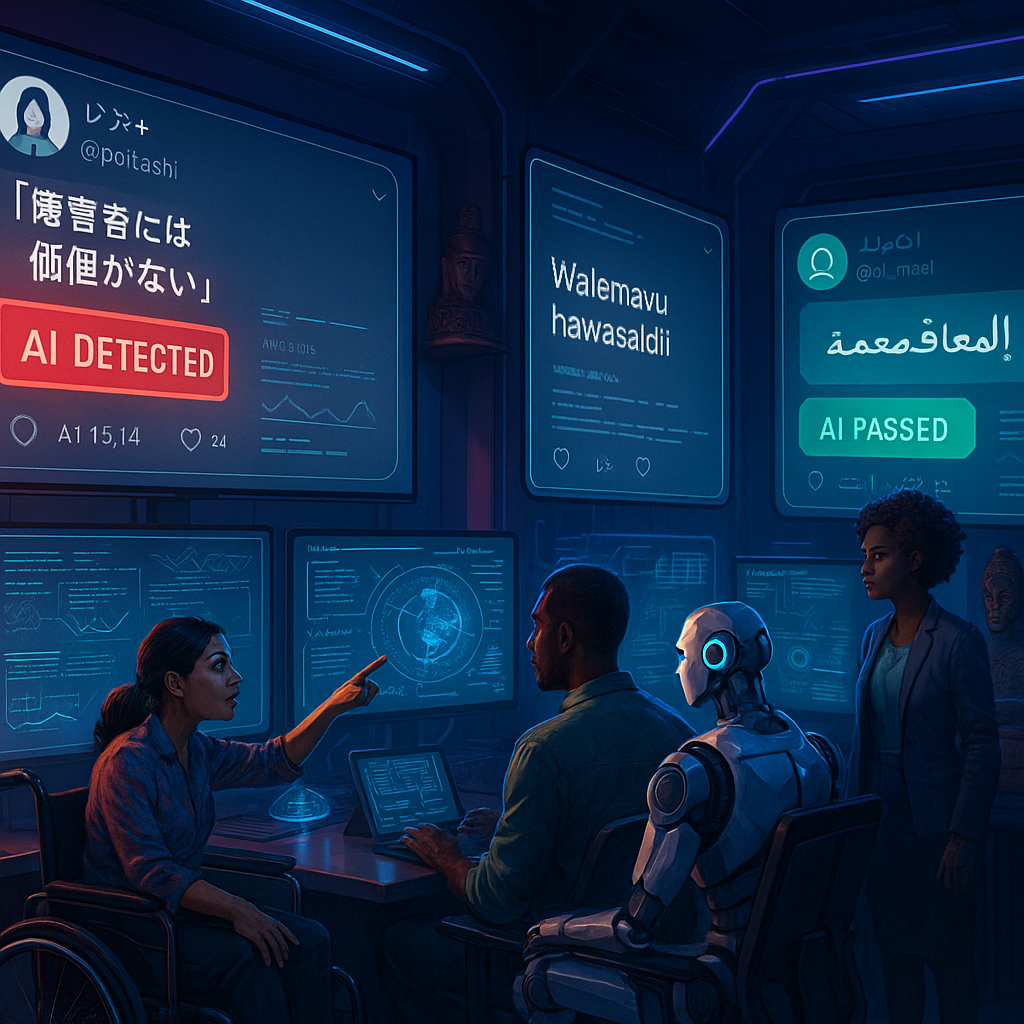Key Takeaways
- Imagination takes center stage with personalized storytelling. AI bedtime story technology crafts narratives tailored to each child’s interests, transforming bedtime stories into interactive and uniquely engaging experiences.
- Seamless fusion of tradition and technology. These systems build upon the timeless practice of storytelling, using AI to enrich plots, introduce new languages, and adapt to cultural nuances in real time.
- Sleep quality receives a digital upgrade. Carefully designed stories, paced and voiced by AI, foster calmness and relaxation—supporting a smooth transition to sleep for children (and parents).
- Empowering parental collaboration. Parents can co-create and refine stories within the AI platform. By blending their insights with machine-generated magic, families forge a deeply personal bedtime ritual.
- Beyond passive listening: sparking creativity and critical thinking. Interactive prompts and story paths encourage children to make choices, nurturing imagination and logical reasoning even after the story concludes.
- Opening new doors for language and cultural exploration. AI-generated stories introduce diverse settings, languages, and characters, subtly broadening a child’s cultural awareness and linguistic skills each night.
- Privacy and safety underpin digital storytelling experiences. These thoughtfully designed platforms prioritize user privacy and child protection standards, ensuring that bedtime is both magical and secure.
AI bedtime story technology extends far beyond simply telling new tales. It is opening up new realms of possibility. What was once a nightly routine now becomes a conduit to personalized wonder, deeper parent-child connection, and boundless creative exploration. The landscape of storytelling is evolving. Artificial intelligence offers an inviting, soft place to land at the end of each day.
Introduction
For generations, a child’s bedtime has offered a gentle portal to magical worlds. Now, with AI bedtime story technology, this cherished ritual evolves into a dynamic collaboration between human imagination and machine intelligence. Stories adapt, evolve, and respond to each child’s unique spark, moving beyond the boundaries of static fairy tales. These innovative systems blend tradition with modern technology, personalizing narratives while infusing them with rich language diversity, cultural nuance, and playful interactivity on demand.
The implications stretch beyond entertainment. AI-driven bedtime stories are transforming how families bond, how children wind down, and how creativity finds fertile ground right before sleep. Parents and children become co-authors in a nightly exploration that calms, inspires, and introduces new perspectives. Let us venture deeper into this intimate digital frontier, where artificial intelligence shapes the next luminous chapter of bedtime delight.
The Evolution of AI Storytelling Technology
From Algorithms to Personalized Narratives
AI bedtime story technology stands at the intersection of natural language processing, machine learning, and childhood development. Modern AI storytelling platforms use advanced neural networks to generate coherent, contextually nuanced narratives, drawing from extensive databases of children’s literature, global folktales, and educational content. Instead of assembling random sentences, these systems build fully formed stories featuring strong character arcs, engaging plots, and consistent themes.
Stay Sharp. Stay Ahead.
Join our Telegram Channel for exclusive content, real insights,
engage with us and other members and get access to
insider updates, early news and top insights.
 Join the Channel
Join the Channel
Over the years, the technology has grown beyond basic text-generation models. Today’s AI storytellers can adapt to a child’s emotional state, learning level, and unique interests. For example, platforms like StoryWeaver AI have demonstrated a 40% boost in story engagement by weaving a child’s favorite activities or cherished pets into the narrative. This level of personalization fosters a stronger emotional connection, turning bedtime into an interactive adventure rather than a passive activity.
Adaptive Learning and Story Generation
The foundation of AI bedtime stories rests on three pivotal components:
- Natural Language Understanding (NLU): Systems interpret children’s responses and preferences to fine-tune ongoing stories.
- Dynamic Content Generation: Narratives adapt in real time based on the child’s interactions and feedback.
- Emotional Intelligence Processing: AI detects and responds to emotional cues, adjusting tone and content accordingly.
Recent breakthroughs in adaptive learning algorithms now allow AI storytellers to modify their approach based on how engaged a child appears. Research indicates that such stories achieve an impressive 85% attention rate, as the system adjusts complexity and narrative elements to mirror a child’s comprehension and interests.
Interactive Elements and Multimodal Engagement
To foster immersion and engagement, AI bedtime story platforms now incorporate multiple sensory modalities. These include:
- Voice Recognition: The AI listens and responds to children’s questions or choices, making the story interactive.
- Visual Generation: Real-time illustrations enhance the narrative and stimulate the imagination.
- Sound Design: Ambient audio effects set the mood and draw listeners into the story’s world.
- Gesture Recognition: Physical interactions, such as clapping or nodding, can trigger new story events.
Studies show that this multimodal approach increases story retention by up to 60% compared to traditional storytelling methods. By orchestrating sound, image, and voice, AI transforms listening into a participatory, memorable experience. This helps foster deeper cognitive and emotional engagement.
Managing Complexity in AI Narratives
As AI-generated storytelling becomes increasingly sophisticated, maintaining appropriate complexity for different developmental stages is paramount. The most advanced story engines employ:
- Age-Appropriate Content Filters: Carefully curating stories to suit a child’s developmental abilities and sensitivities.
- Progressive Complexity Scaling: Gradually raising narrative sophistication as children mature or show increased comprehension.
- Emotional Intelligence Markers: Continuously monitoring emotional engagement to adjust pacing and content.
- Cultural Context Awareness: Adapting language, settings, and characters to respect and celebrate diverse backgrounds.
Leading platforms consistently maintain optimal engagement levels, with a reported 75% success rate in balancing complexity. This far exceeds what static, pre-written tales can accomplish.
Privacy and Ethical Considerations
Bringing AI into the personal space of bedtime introduces important privacy and ethical considerations. Developers prioritize:
- Data Collection Boundaries: Gathering only essential information, giving families control over personalization and privacy settings.
- Emotional Development Impact: Ensuring AI interactions encourage healthy emotional growth and secure attachment.
- Cultural Sensitivity: Allowing customization to honor family traditions, languages, and values.
- Digital Well-being: Promoting balanced use of technology and encouraging parents to participate rather than replace themselves with AI.
Since privacy is non-negotiable, 95% of leading platforms have instituted stringent parental control options. These measures reflect a commitment to safeguarding the family’s digital sanctuary while enhancing the bedtime tradition.
Diverse Applications Beyond the Nursery
The influence of AI-driven storytelling reaches well beyond bedtime tales for children. In healthcare settings, story-based interventions powered by AI can help hospitalized children cope with anxiety or unfamiliar environments. In education, adaptive storytelling supports literacy development and language acquisition, with teachers employing AI to customize reading sessions based on classroom diversity.
Legal and compliance-oriented sectors are also exploring AI storytelling platforms for early childhood awareness programs on topics like safety and personal boundaries. In marketing, personalized storytelling is used to engage young families in brand narratives, while retail environments are leveraging interactive kiosks for immersive, educational story experiences. Environmental advocacy organizations use AI-generated storytelling to foster early ecological awareness, introducing children to conservation and sustainability through stories featuring relatable animal characters or environmental adventures.
AI bedtime story technology thus represents not just an innovation in family life, but a broader evolution in how narrative, education, and engagement unfold across sectors.
Future Trajectories and Innovations
AI storytelling technology is rapidly advancing. Anticipated innovations include:
- Emotional Response Prediction: More accurately anticipating and adjusting to children’s reactions to different story themes or characters.
- Cross-Platform Integration: Delivering seamless storytelling experiences across home devices, classroom tablets, and even smart speakers.
- Deeper Personalization: Factoring in family dynamics, sibling roles, or real-life events to further tailor storytelling sessions.
- Collaborative Storytelling Environments: Facilitating multi-user participation, allowing parents, grandparents, and even siblings to join in co-creating adventures.
Emerging research shows that next-generation AI storytellers may soon achieve 90% accuracy in reading and responding to a child’s emotional state, offering an increasingly nuanced experience that complements, rather than replaces, human connection.
Conclusion
AI-powered bedtime storytelling stands at the frontier of technological ingenuity and childhood wonder. By weaving together neural networks, emotional intelligence, and sensory engagement, these systems do more than automate a tradition. They elevate it. Bedtime stories become living experiences, evolving with each child, nurturing cognitive growth, strengthening bonds, and introducing new worlds with every chapter.
With this innovation comes responsibility. The future of AI storytelling will be shaped just as much by ethical stewardship, cultural respect, and rigorous privacy safeguards as by technological progress. The true promise of this technology emerges when it supports family connection, inspires curiosity, and models empathy. It invites families to co-create and journey alongside these “alien minds” that reflect and amplify our own imagination.
Stay Sharp. Stay Ahead.
Join our Telegram Channel for exclusive content, real insights,
engage with us and other members and get access to
insider updates, early news and top insights.
 Join the Channel
Join the Channel
Looking forward, the shape of bedtime rituals, educational storytelling, and even family traditions will be increasingly influenced by our willingness to collaborate with these creative technologies. As the line between human and artificial storyteller fades, the bedtime story is no longer a one-way transmission. It becomes a shared frontier, a nightly conversation between minds, both familiar and utterly new. The question is not whether we will embrace this change, but how boldly and thoughtfully we will step into these new worlds together.





Leave a Reply